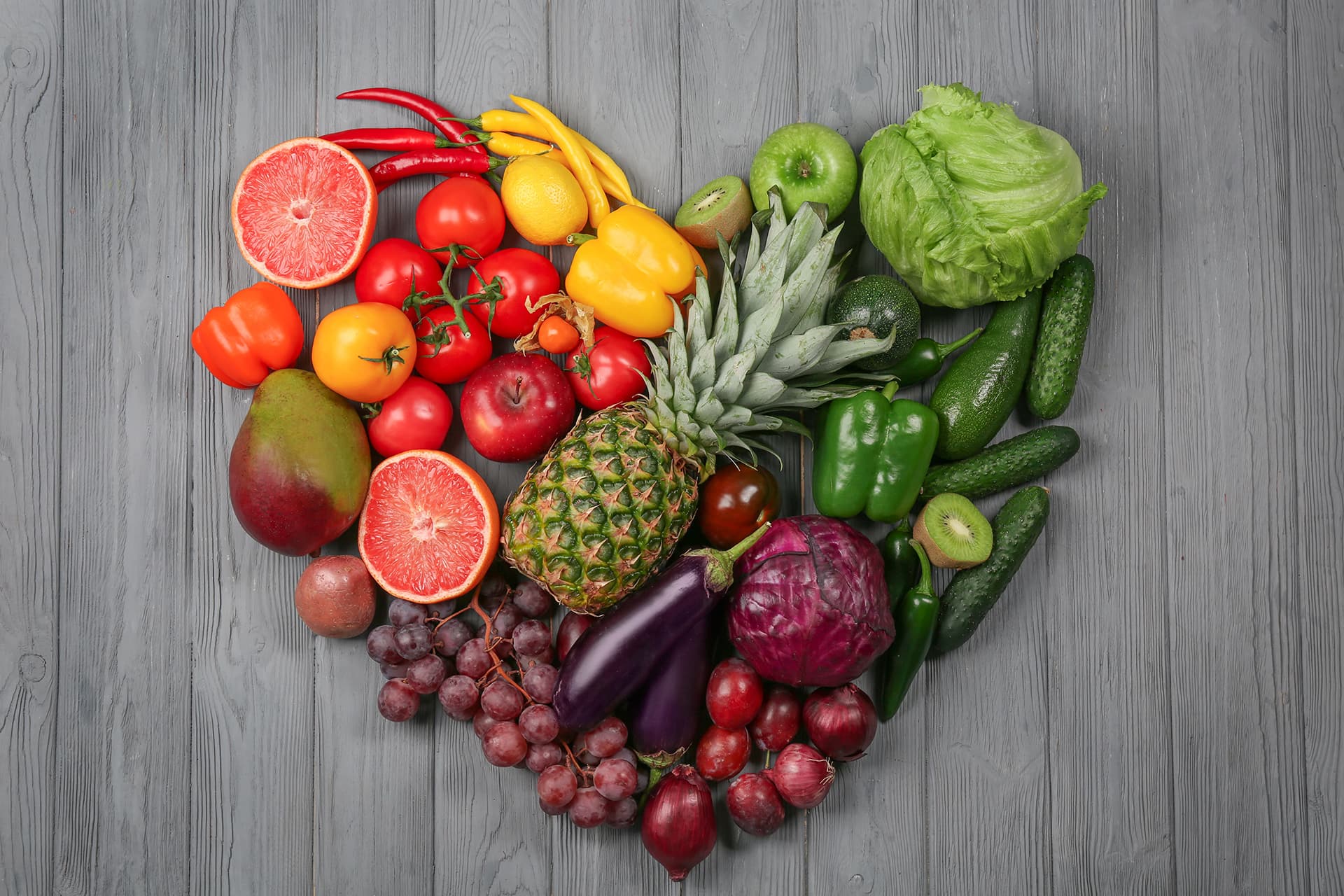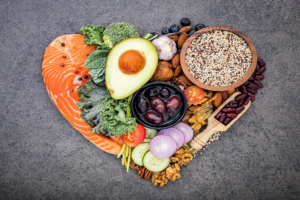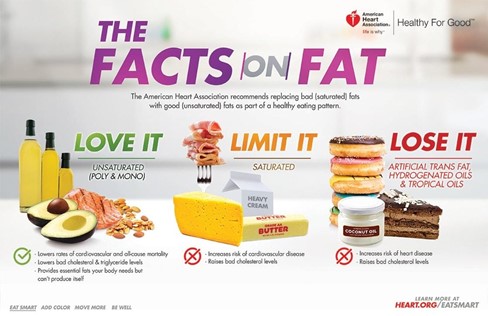
Did you know that heart disease is the leading cause of death for men and women and almost all ethnic groups in the United States?1 It beats cancer and accidents by nearly 100,000 people. The connection between diet and heart disease has been studied for years. Although many Americans might understand the correlation, the challenge is learning which foods to incorporate into your diet and which to avoid.
Do you want to improve your cardiovascular health? Have you been diagnosed with heart disease? Perhaps you struggle to manage your cholesterol or blood pressure levels. Regardless, these tips will ensure you are on your way to a healthier heart:
Understanding the Difference in Fats
 Many of us remember the days of “fat-free” and “low-fat” in the 1990s. This diet came to fruition after researchers found a correlation between high-fat diets and high cholesterol levels. The problem is that physicians, the government and the food industry were putting all fats in the same category. This caused people to avoid all fatty foods and go for foods higher in carbohydrates, which in turn accelerated the obesity epidemic. The food industry even went so far as to market Twizzlers as a good choice because of its fat-free nature!
Many of us remember the days of “fat-free” and “low-fat” in the 1990s. This diet came to fruition after researchers found a correlation between high-fat diets and high cholesterol levels. The problem is that physicians, the government and the food industry were putting all fats in the same category. This caused people to avoid all fatty foods and go for foods higher in carbohydrates, which in turn accelerated the obesity epidemic. The food industry even went so far as to market Twizzlers as a good choice because of its fat-free nature!
Now that we have moved past the idea that all fats are bad for us, it is important to understand the difference in fats and why some fats actually help to reduce overall cholesterol levels.
Unsaturated fats (poly or mono) aka “healthy fats:” These fats have positive effects on your cholesterol and can lower LDL or “bad” cholesterol and triglyceride levels while improving insulin and blood glucose levels.2
Sources:
- Avocado
- Nuts
- Seeds
- Olives
- Oils liquid at room temperature
Saturated fats: These fats have negative effects on our cholesterol levels by raising LDL cholesterol levels and lowering HDL cholesterol levels.2
Sources:
- Fatty meats
- Butter
- Heavy Cream
- Cheese
Trans fat, hydrogenated oils, and tropical oils: Trans fat is considered the worst type of fat we can eat because it lowers your HDL while also raising your LDL levels. These fats can be so detrimental to your health that the FDA has prohibited food manufacturers from adding artificial trans fat into foods and beverages.3
Sources:
- Baked goods
- Fried Foods
- Oils solid at room temperature
Use the figure below from the American Heart Association as a rule of thumb when determining whether the source of fat in your food is beneficial in managing cholesterol levels4:
Incorporating dietary fiber
Just like fats, there are different types of fiber: soluble and insoluble fiber. Soluble fiber plays an important role in lowering cholesterol levels. Insoluble fiber has many other health benefits not directly correlated to lowering cholesterol levels.
Soluble fiber forms a gel-like consistency when it is dissolved in water, which helps soften the stool and support regular bowel movements. So, what is the correlation with cholesterol levels? In a cross-sectional study found in rural-to-urban workers in China, there was a dose-response relationship between increased dietary fiber intake and decreased total cholesterol to HDL ratio in male and female workers.5
Sources:
- Legumes
- Seeds
- Fruits (figs, avocado, nectarine, apricots, apple (skin-on))
- Vegetables (brussels sprouts, sweet potato (skin-on), broccoli, turnips)
Monitoring Salt Intake
There’s a reason that nurses, doctors and other healthcare workers take your blood pressure before starting a doctor’s appointment. This number can indicate many health conditions, primarily heart conditions. The higher the number, the higher the risk because your heart is working overtime to pump blood to all areas of the body.
When we eat too much salt (which contains sodium), our body holds extra water to “wash” the salt from our body. This causes our blood pressure to rise because the extra water adds stress on our heart. So, how much is too much? The American Heart Association recommends limiting sodium intake to 1,500 mg or less per day.6
Foods highest in sodium:
- Processed foods: deli meats, canned goods, etc.
- Condiments
- Frozen and box mixes
- Snack foods: pretzels, chips, etc.
- Pickled or marinated foods
These tips – combined with avoiding alcohol and tobacco, exercising regularly and increasing your variety in fruits and vegetables – prove to be the best lifestyle to follow for a happy, healthy heart. People with diets consistent with this dietary pattern had a 31 percent lower risk of heart disease, a 33 percent lower risk of diabetes and a 20 percent lower risk of stroke.7
References
-
- Cdc.gov. 2021. FastStats. [online] Available at: <https://www.cdc.gov/nchs/fastats/leading-causes-of-death.htm> [Accessed 17 December 2021].
- The Nutrition Source. 2021. Types of Fat. [online] Available at: <https://www.hsph.harvard.edu/nutritionsource/what-should-you-eat/fats-and-cholesterol/types-of-fat/> [Accessed 17 December 20
- Mayo Clinic. 2021. Trans fat: Double trouble for your heart. [online] Available at: <https://www.mayoclinic.org/diseases-conditions/high-blood-cholesterol/in-depth/trans-fat/art-20046114> [Accessed 17 December 2021].
- www.heart.org. 2021. The Facts on Fats Infographic. [online] Available at: <https://www.heart.org/en/healthy-living/healthy-eating/eat-smart/fats/the-facts-on-fats> [Accessed 17 December 2021].
- Zhou, Q., Wu, J., Tang, J., Wang, J., Lu, C. and Wang, P., 2015. Beneficial Effect of Higher Dietary Fiber Intake on Plasma HDL-C and TC/HDL-C Ratio among Chinese Rural-to-Urban Migrant Workers. International Journal of Environmental Research and Public Health, 12(5), pp.4726-4738.
- Cleveland Clinic. 2021. High Blood Pressure Diet: Foods to Eat & to Avoid. [online] Available at: <https://my.clevelandclinic.org/health/articles/4249-hypertension-and-nutrition> [Accessed 17 December 2021].
- Chiuve, S., Fung, T., Rimm, E., Hu, F., McCullough, M., Wang, M., Stampfer, M. and Willett, W., 2012. Alternative Dietary Indices Both Strongly Predict Risk of Chronic Disease. The Journal of Nutrition, 142(6), pp.1009-1018.

